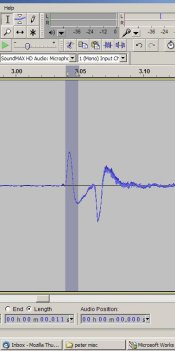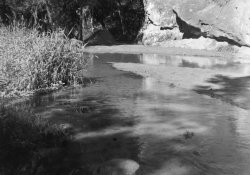peter k.
Member
A friend of my wife an I, gave me her grandfathers 1914 3a folding brownie, that is in excellent shape, and so did a lens test on it.
Got a weird waveform... taken @100.
Someone give me a clue... on what's happening with this lens... with the two lower peaks, the second larger than the first.
Perhaps its my DYI setup.. or .. ? the lens, bad dog .. no bone
Yet, took the lenses off, and looked directly at the shutter, both sides, and its clean, no oil, but understand through archives that the lens, a Brownie Ball Bearing, was a 'dry' lens.
Firing the lens, its sounds good to me, but then we have very little experience in this.
The camera is very clean and in good shape. Keep, for many decades, in the top of her closest.

Took a black and white 4x5 (Arista400@200) that metered (Weston Ranger 9) directly, and gave indication of 15.5. ... Couldn't get an incident meter reading exposure as I wasn't into getting my feet all wet in the new soft silt, created by the earlier Slide Fire of Oak Creek Canyon, Sedona Az
Shot it f16 (U.S.) @100, focus set at 50' (the lit rocks), and here is a quick scan with nothing done to it.

Which looks good to me... bright light to deep shade..
Got a weird waveform... taken @100.
Someone give me a clue... on what's happening with this lens... with the two lower peaks, the second larger than the first.
Perhaps its my DYI setup.. or .. ? the lens, bad dog .. no bone
Yet, took the lenses off, and looked directly at the shutter, both sides, and its clean, no oil, but understand through archives that the lens, a Brownie Ball Bearing, was a 'dry' lens.
Firing the lens, its sounds good to me, but then we have very little experience in this.
The camera is very clean and in good shape. Keep, for many decades, in the top of her closest.

Took a black and white 4x5 (Arista400@200) that metered (Weston Ranger 9) directly, and gave indication of 15.5. ... Couldn't get an incident meter reading exposure as I wasn't into getting my feet all wet in the new soft silt, created by the earlier Slide Fire of Oak Creek Canyon, Sedona Az
Shot it f16 (U.S.) @100, focus set at 50' (the lit rocks), and here is a quick scan with nothing done to it.

Which looks good to me... bright light to deep shade..







